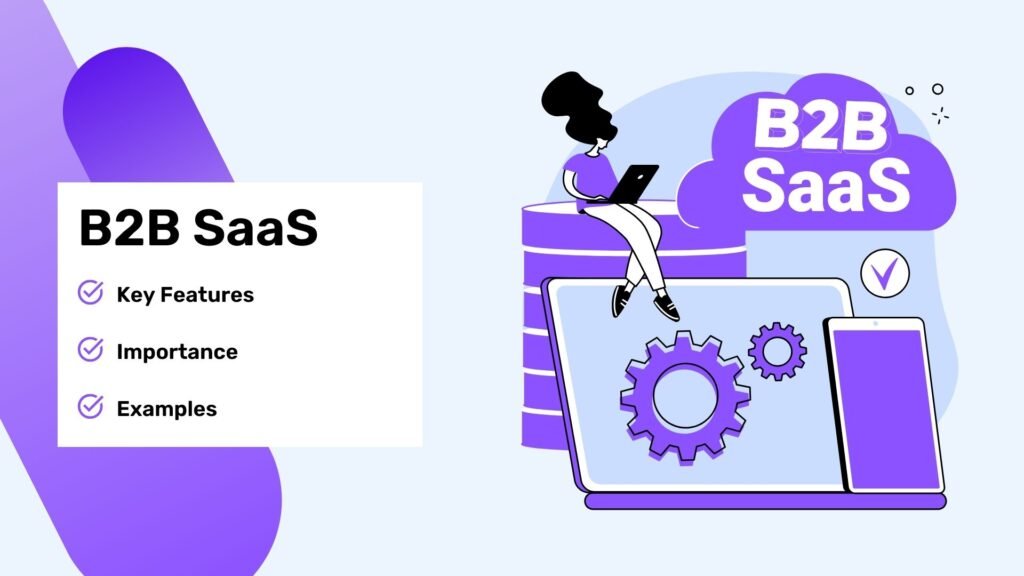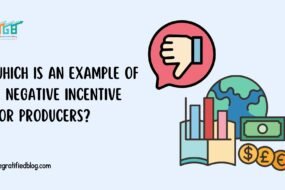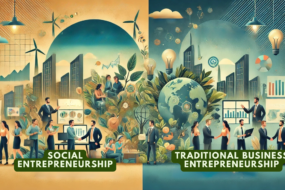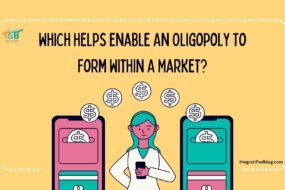
Businesses everywhere are turning to technology to make their work easier, faster, and more efficient. Among the many solutions out there, one term that pops up frequently is B2B SaaS. But what is it exactly? And why is it becoming such a big deal in the world of business?
In this guide, we are diving deep into B2B SaaS. This stands for Business-to-Business Software as a Service. It is not just a fancy term; it represents a huge shift in how businesses get things done. From managing teams to handling customer relationships, B2B SaaS offers tools that work seamlessly online, saving time and money.
If you are a business owner, a manager, or just someone curious about how companies operate more efficiently, this guide is for you. We will explore what B2B SaaS is, how it works, and why it matters. By the end, you will have a clear understanding of this game-changing technology and how it could fit into your world. Let us get started.
What is B2B SaaS?

B2B SaaS stands for Business-to-Business Software as a Service. Simply put, it is software that one business uses to help another business run better. Unlike traditional software, which you download and install on your computer, B2B SaaS is cloud-based. This means it works over the internet, and you can access it anytime, anywhere.
Think of it like this: instead of buying software outright, you subscribe to it, like Netflix or Spotify. The software is hosted on the provider’s servers, so you do not need to worry about installing updates or fixing bugs. Everything happens automatically, saving you the hassle.
B2B SaaS is all about making businesses more efficient, productive, and cost-effective. Instead of spending money on expensive IT infrastructure, businesses can subscribe to a SaaS tool and get started quickly. It is this convenience and flexibility that makes B2B SaaS so popular today.
Key Features of B2B SaaS Platforms
B2B SaaS platforms are designed to be user-friendly, efficient, and scalable. Let us explore some of their standout features:
1. Cloud-Based Access
- You can use the software from anywhere, as long as you have an internet connection.
- No need to install anything; just log in and start working.
2. Subscription Model
- You pay a monthly or annual fee, making it more affordable than buying expensive software upfront.
- Subscription plans often come with different tiers, so you only pay for what you need.
3. Automatic Updates
- SaaS providers handle all updates, meaning you always have the latest features without lifting a finger.
- No downtime or disruptions during updates.
4. Scalability
- Whether you are a small startup or a large enterprise, SaaS platforms grow with you.
- Add or remove features based on your business size and needs.
5. Integration
- Most B2B SaaS tools integrate with other software, making it easy to connect all your systems.
- For example, you can link your accounting software to your CRM for seamless data flow.
6. Data Security
- SaaS providers invest heavily in cybersecurity, protecting your data from breaches.
- Regular backups ensure your information is safe and accessible.
Importance of B2B SaaS
Why is B2B SaaS such a big deal? The answer lies in the way it solves common business problems and drives growth. Here are some reasons it is so important:
1. Cost-Effective
- Traditional software requires expensive licenses and hardware. With SaaS, businesses only pay for what they use.
- There is no need for a large IT team, as SaaS providers handle maintenance.
2. Flexibility
- Businesses can scale up or down based on their needs.
- Remote access means teams can work from anywhere, which is vital in today’s hybrid work environment.
3. Improved Efficiency
- Automates repetitive tasks, saving time and effort.
- Helps teams collaborate better with tools for communication and project management.
4. Faster Implementation
- No lengthy setup process; you can start using SaaS tools almost immediately.
- Perfect for businesses that need quick solutions.
5. Access to Innovation
- SaaS providers regularly add new features, keeping businesses ahead of the curve.
- Small businesses, in particular, gain access to advanced tools that were once only affordable for large enterprises.
Examples of B2B SaaS Products
B2B SaaS is incredibly versatile, serving a wide range of industries and functions. Here are some of B2B SaaS examples:
1. Customer Relationship Management (CRM)
- Tools like HubSpot and Salesforce help businesses track leads, manage customer interactions, and analyze sales data.
2. Project Management
- Platforms like Monday.com and Jira simplify team collaboration and task management.
3. Accounting and Finance
- Tools like Xero and QuickBooks handle invoicing, payroll, and financial reporting.
4. Human Resources
- Solutions like BambooHR streamline hiring, onboarding, and employee management.
5. Marketing and Analytics
- SaaS platforms like Mailchimp and Google Analytics help businesses run campaigns and measure their performance.
6. E-Commerce
- Shopify and BigCommerce provide all-in-one solutions for online stores.
How Does B2B SaaS Work?
B2B SaaS operates on a simple but effective model. Here is how it typically works:
1. Provider Hosts the Software
- SaaS providers build and maintain the software on their servers.
- They handle updates, bug fixes, and overall performance.
2. Subscription-Based Access
- Businesses pay a subscription fee to use the software.
- Plans vary based on features, number of users, or usage limits.
3. Cloud Connectivity
- The software is hosted in the cloud, so you only need an internet connection to access it.
- This eliminates the need for heavy-duty hardware or IT infrastructure.
4. User-Friendly Design
- SaaS platforms prioritize ease of use, with simple interfaces and onboarding processes.
- Many offer tutorials and customer support for a smooth start.
5. Customizable Features
- Most SaaS tools let you add or remove features to fit your specific needs.
- Integrations with other tools ensure everything works together seamlessly.
What Are the Best Practices for Successful B2B SaaS Adoption?
Adopting a B2B SaaS platform can transform your business, but it is essential to approach it strategically. Here are some best practices to ensure a smooth transition:
1. Define Your Goals
- Be clear about what you want to achieve with the SaaS tool.
- Whether it is improving efficiency or saving costs, knowing your goals helps you pick the right platform.
2. Involve Your Team
- Include key team members in the decision-making process.
- Their input ensures the software meets practical needs and boosts user adoption.
3. Start Small
- Begin with a trial or limited deployment to test the platform.
- This helps you identify potential issues before rolling it out company-wide.
4. Ensure Proper Training
- Invest in training sessions to familiarize your team with the software.
- Many SaaS providers offer tutorials, webinars, and customer support.
5. Monitor Usage and Feedback
- Keep track of how the software is being used and gather feedback from your team.
- Regular evaluations ensure the platform continues to meet your needs.
6. Focus on Integration
- Make sure the SaaS tool integrates smoothly with your existing systems.
- This avoids data silos and improves efficiency.
What Are the Best Marketing Strategies for B2B SaaS Industry?
Marketing a B2B SaaS product is not just about showcasing features; it is about solving problems. Here are some effective strategies:
1. Create Valuable Content
- Write blogs, guides, and whitepapers that address common industry challenges.
- Content marketing builds trust and positions your brand as an expert.
2. Leverage Social Proof
- Share testimonials, case studies, and reviews from satisfied customers.
- Social proof reassures potential clients about your product’s reliability.
3. Offer Free Trials
- A free trial lets businesses test your product before committing.
- This approach reduces hesitation and drives conversions.
4. Invest in Paid Ads
- Use platforms like LinkedIn and Google Ads to target decision-makers.
- Focus on keywords that highlight the problems your software solves.
5. Host Webinars
- Webinars are a great way to demonstrate your product’s value.
- They also allow you to answer questions in real time, building rapport with your audience.
6. Optimize Your Website
- Make your website user-friendly and packed with useful information.
- Include clear calls-to-action, like “Sign Up for a Free Trial.”
How to Choose the Right B2B SaaS Provider?
Choosing the perfect B2B SaaS provider can feel overwhelming with so many options available. Here is how to make an informed decision:
1. Identify Your Needs
- List the specific problems you need the software to solve.
- Look for platforms that align with your business goals.
2. Check Reviews and Testimonials
- Research customer reviews to see how other businesses rate the software.
- Testimonials provide real-world insights into the platform’s performance.
3. Evaluate Features
- Focus on features that directly benefit your business.
- Avoid paying for extras you do not need.
4. Assess Scalability
- Choose a provider that can grow with your business.
- Ensure the software can handle increased users or data as your needs evolve.
5. Test Customer Support
- Reliable customer support is critical when issues arise.
- Test the provider’s responsiveness during your trial period.
6. Compare Pricing
- Look for transparent pricing with no hidden fees.
- Make sure the cost fits within your budget without compromising on quality.
What Are the Emerging Trends in B2B SaaS?
The world of B2B SaaS is constantly evolving. Staying updated on trends can help your business stay ahead. Here are some key developments to watch:
1. AI and Machine Learning
- SaaS platforms are increasingly using AI to automate tasks and provide insights.
- Examples include predictive analytics and personalized recommendations.
2. Focus on User Experience (UX)
- Simple, intuitive designs are becoming a top priority.
- Platforms with better UX see higher user adoption rates.
3. Industry-Specific Solutions
- More SaaS providers are creating tools tailored to specific industries.
- This trend ensures businesses get features designed for their unique needs.
4. Enhanced Security
- With data breaches on the rise, security features like encryption and multi-factor authentication are becoming standard.
5. Low-Code/No-Code Platforms
- These tools let businesses customize software without needing a developer.
- This makes SaaS more accessible to smaller teams.
6. Sustainability Efforts
- Providers are focusing on eco-friendly practices, like optimizing server energy usage.
- Businesses are choosing SaaS providers with sustainable operations.
Conclusion
B2B SaaS is revolutionizing how businesses operate. It is more than just software—it is a way to simplify tasks, save time, and achieve goals faster. From managing customer relationships to streamlining team collaboration, B2B SaaS tools have become essential for businesses of all sizes.
By understanding what B2B SaaS is, how it works, and why it matters, you can make informed decisions for your company. Whether you are adopting your first SaaS tool or looking to upgrade, the insights in this guide will help you every step of the way.
So, dive in, explore the options, and see how B2B SaaS can transform your business. It is time to work smarter, not harder.








No Comments